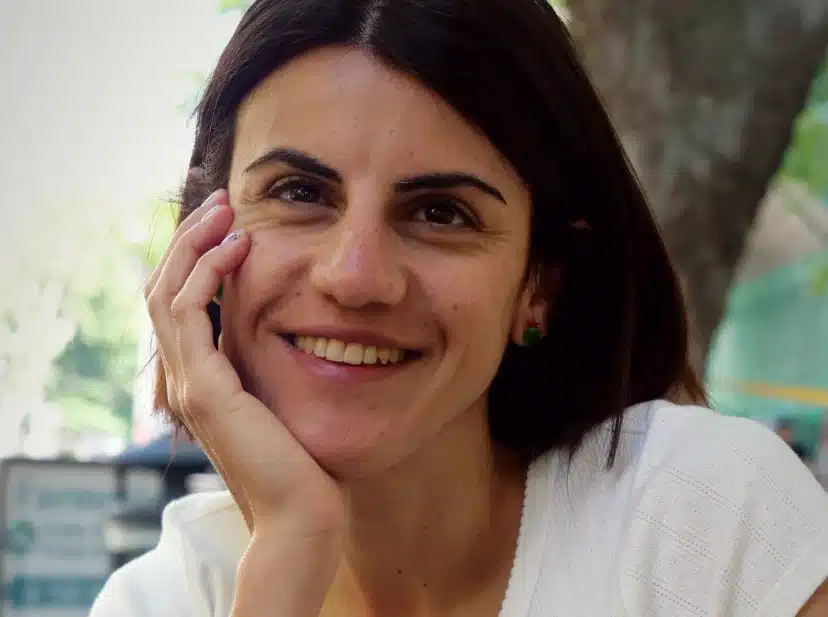I’ve Been There, I Get It.
I’ve been teaching Italian for over a decade and have worked with thousands of learners. And while the internet is overflowing with “the best methods,” honestly? I keep seeing the same problems show up again and again.
Most learners don’t need another shiny course or app.
What they really need is a system—a clear, effective way to learn how to learn.
So here’s my two cents on what it really takes to learn Italian (or any other language), at any level.
1. Know Your Learning Style
Before diving into Italian, take a minute to understand how you learn best.
Are you a visual learner who needs to see things written out?
An auditory learner who remembers what you hear?
Or a kinesthetic learner who learns by doing?
Think back to school—did you learn best through reading, listening, or hands-on tasks?
This matters. Most beginner Italian courses are audio-heavy, which is great for auditory learners, but can leave visual or hands-on learners frustrated.
? Moral of the story? Don’t copy someone else’s routine. Their success came from following a method that fit them.Start with what fits you.
2. Follow a Plan (Yes, One That Includes Grammar and Textbooks)
You’ve probably heard, “You can learn Italian without grammar!” or “Learn like a child!”
Honestly? Run.
Italian, like all Romance languages, is beautifully structured—and knowing its grammar unlocks fluency faster.
No need for boring drills or heavy textbooks, but yes, you do need a solid base.
For example, here’s the verb viaggiare (to travel) in the present tense:
- Io viaggio
- Tu viaggi
- Lui/lei viaggia
- Noi viaggiamo
- Voi viaggiate
- Loro viaggiano
Once you’ve learned this pattern, you can apply it to thousands of other -ARE verbs. Learn it once—use it forever.
? Structure doesn’t kill creativity—it frees it. Grammar gives you the tools to actually express yourself.
9 Best Italian Books for Beginners
3. Set Smart, Specific Goals (Know Where You’re Headed)
Most learners start full of energy, then fizzle out. Why?
Because motivation fades without clear direction.
Set specific, measurable goals that give your learning a purpose. Like:
- Spend a week in Italy at a language school
- Take an official Italian exam (CILS or CELI)
- Finish an A2-level textbook by December
? Tip: Get familiar with CEFR levels (A1, A2, B1, etc.) and use them to track your progress.

4. Get Honest Feedback (And Use It)
You can’t improve what you don’t measure.
One of the biggest mistakes I see? Students learning in a vacuum—with no one checking their work, correcting their mistakes, or challenging them.
Here’s what to do:
- ✅ Get assessed regularly
- ? Ask for homework (and get it corrected!)
- ? Work with someone who gives honest feedback
Whether it’s a tutor, language partner, or teacher—feedback is fuel.
5. Push Yourself Outside Your Comfort Zone
Yes, it’s good to enjoy learning. But only doing what feels easy won’t get you fluent.
Think of it like going to the gym. If you only did the exercises you liked, with no challenge, would you actually get stronger?
It’s the same with languages.
To build your language muscle, you’ve got to:
- Make mistakes
- Speak when you’re unsure
- Listen to things that stretch your brain
- Embrace what feels uncomfortable
Growth happens outside your comfort zone. That’s where real progress lives.
6. Use It or Lose It
Let me say it clearly:
You don’t need to live in Italy to speak Italian.
I know people who’ve lived there for years and still struggle—and others who’ve never visited and speak fluently.
What makes the difference? Consistency.
Build Italian into your daily routine:
? Listen to a podcast while walking
? Read a short story at breakfast (or bedtime!)
? Talk to yourself out loud
? Review vocab while waiting in line
Want a fun resource to help you do this? → Read my e-magazine ?
7. Common Mistakes to Avoid (Especially as a Beginner)
? Skipping grammar completely
? Only focusing on speaking—neglecting reading, writing, listening
? Using content way above your level
? “Just speaking” without thinking first
? As a beginner, stick to content that’s simple, clear, and just a little challenging. That’s where fluency starts.
? Ready to Book Your Coaching Session?
If you’re looking for clarity, structure, and a personalized roadmap to help you reach your Italian goals—I’d love to support you.
This is not a traditional class. It’s a 1:1 coaching experience designed to help you:
Assess your current level and goals
Build a learning system that fits you
Choose the right tools, resources, and routines
Break out of ineffective habits
Become a more confident, independent learner
? Fill out the short form below, and I’ll get back to you within 48 hours with next steps.
8. Learn About the Comprehensible Input Concept
Here’s the catch: don’t dive into native content too soon.
It’s like trying to lift 50kg weights on your first day at the gym—you’ll burn out quickly and feel discouraged.
Start by building your foundation.
Strong foundations lead to confident speaking.
Weak ones? You’ll stumble through sentences, get stuck, and unintentionally make your listeners work extra hard to understand you.
Be kind to them—and to yourself. ?
Use content that’s slightly above your current level: comprehensible, but challenging enough to stretch you. That’s how fluency is built, one step at a time.
9. Your Action Plan (Especially if You’re Starting Fresh)
Here’s what I recommend:
- Identify your learning style (visual, auditory, kinesthetic)
- Create structure—sign up for a school or hire a teacher
- Build a consistent routine (yes, a rigid one!)
- Use books—you’re an adult, not a toddler
- Set a real goal—something with a deadline
- Get feedback—early, honest, and often
- Once you’re intermediate, immerse with simplified native content
Italian isn’t hard. It’s just a journey—and like all journeys, it needs a map, a rhythm, and a reason.
Stick with it. Be honest with yourself.
And most of all—fall in love with the process!







